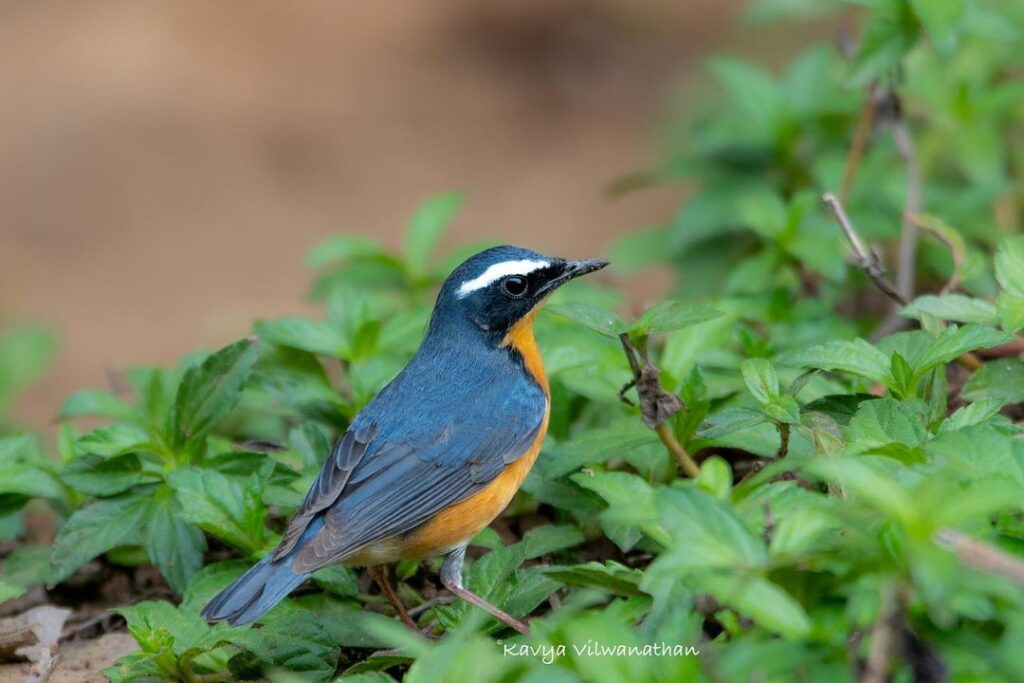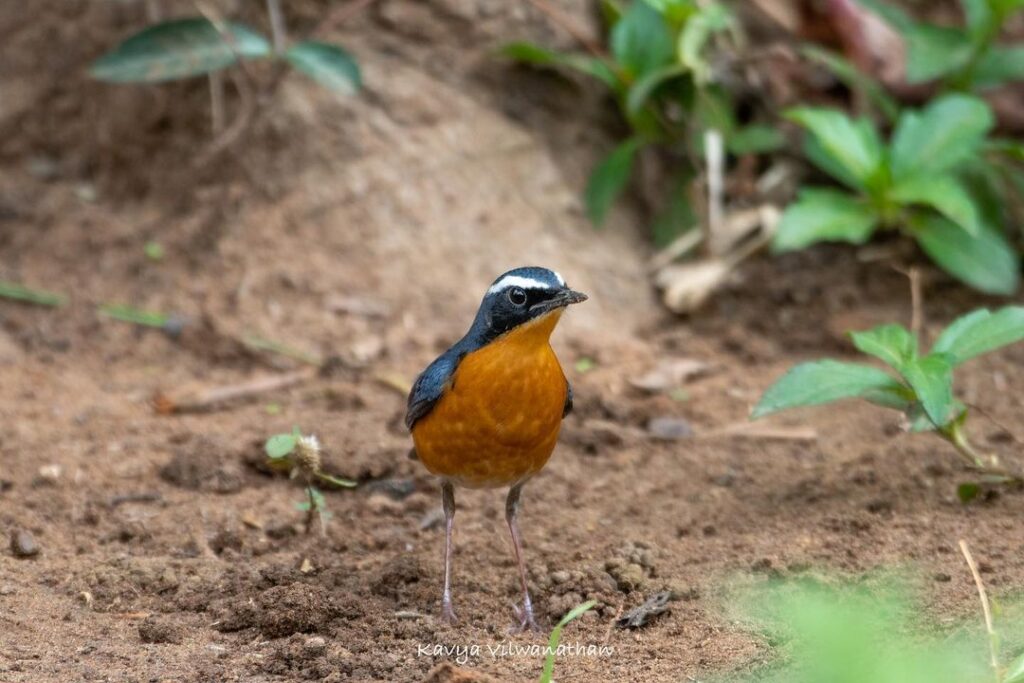“While watching the Paradise flycatchers, Fantails and White eyes moving around the branches close to the stream, we observed this little blue bird land below the Mahua tree foraging on the ground.” writes Kavya Vilwanathan, our naturalist at Red Earth Tadoba.
A birding enthusiast, Kavya was on her daily birding rounds with Bejoy, Chief Naturalist at Red Earth, a jungle lodge near Tadoba Zari Gate with easy access to the now thriving forest after the resettlement of Kolsa village. Interestingly, the bird life has also improved around the region now.

“At first what we thought was the Tickell’s blue flycatcher, then observed the white brow and the orange underparts. And we were like, ‘Woah! That’s a new bird’.” exclaims Kavya. “Indian Blue Robin, a lifer- a lifer not just for us but probably for Tadoba too. Thanks to Bejoy for spotting this lifer for us.”
Spotting a lifer is an exciting event for a birder. That too, when this happens in your own backyard, the feeling is just superlative.
The Indian Blue Robin is a small bird that is found in parts of South and Southeast Asia. It is known for its striking blue plumage, which makes it a favourite among birdwatchers and nature enthusiasts. However, this bird can be easily confused with Tickell’s Blue Flycatcher, which has a similar blue colouration.

The Indian Blue Robin and the Tickell’s Blue Flycatcher are both small birds with blue plumage, but there are some differences between the two that can help you tell them apart. The Indian Blue Robin has a darker blue colouration on its head and back, while the Tickell’s Blue Flycatcher has a lighter blue colouration. The Indian Blue Robin also has a distinctive white patch on its wing, which is absent in Tickell’s Blue Flycatcher.
Interestingly, the naturalists at Red Earth Tadoba have recently sighted the Indian Blue Robin in the Tadoba Andhari Tiger Reserve for the first time. This is a significant discovery because the Indian Blue Robin is not commonly found in this region. The naturalists were able to identify the bird by its distinctive blue plumage and the white patch on its wing.

The sighting of the Indian Blue Robin in Tadoba Andhari Tiger Reserve highlights the importance of conservation efforts in preserving the natural habitats of these birds. As more and more people become aware of these beautiful creatures, it is important to work towards protecting their habitats and ensuring that they can continue to thrive in the wild.
In conclusion, the Indian Blue Robin is a beautiful bird that can be easily confused with Tickell’s Blue Flycatcher. However, with careful observation, you can tell these two species apart. The recent sighting of the Indian Blue Robin in Tadoba Andhari Tiger Reserve is an exciting discovery and underscores the importance of conservation efforts in preserving the natural habitats of these birds.
We have always focussed on the complete nature experience with many walks into the buffer area, our own rewilded campus and the villages around, each of which is a treasure trove of nature. When you stay at Red Earth, naturalist centric resort in Tadoba, your experience of the wilderness is going to be so much richer.



